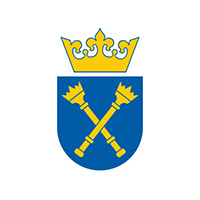- About library About library
-
Collections
Collections
- Type of library materials
-
Jagiellonian University
- Jagiellonian Library
- Medical College
-
Faculty of Law and Administration
- Katedra Historii Administracji i Myśli Administracyjnej
- Katedra Historii Doktryn Politycznych i Prawnych
- Katedra Historii Prawa Polskiego
- Katedra Kryminalistyki i Bezpieczeństwa Publicznego
- Deaprtment of Criminology
- Katedra Polityki Gospodarczej
- Zakład Postępowania Cywilnego
- Department of Criminal Procedure
- Katedra Prawa Administracyjnego
- Katedra Prawa Cywilnego
- Chair of European Law
- Zakład Prawa Finansowego
- Katedra Prawa Gospodarczego Prywatnego
- Katedra Prawa Karnego
- Zakład Prawa i Polityki Penitencjarnej
- Katedra Prawa Konstytucyjnego
- Zakład Prawa Kościelnego i Wyznaniowego
- Katedra Prawa Ochrony Środowiska
- Katedra Prawa Rolnego
- Chair of Labour Law and Social Policy
- Katedra Prawa Prywatnego Międzynarodowego
- Zakład Prawa Rzymskiego
- Katedra Prawa Ustrojowego Porównawczego
- Katedra Publicznego Prawa Gospodarczego
- Katedra Socjologii Prawa
- Katedra Prawa Samorządu Terytorialnego
- Uniwersytecka Poradnia Prawna
- Department of Philosophy of Law and Legal Ethics
- Katedra Teorii Prawa
- Zakład Prawa Międzynarodowego Publicznego
- Katedra Postępowania Administracyjnego
- Katedra Powszechnej Historii Państwa i Prawa
- Ośrodek Koordynacyjny Szkół Praw Obcych
- Centrum Alternatywnego Rozwiązywania Sporów
- Intellectual Property Law Institute
- Faculty of Medicine
- Faculty of Pharmacy
- Faculty of Health Sciences
- Faculty of Philosophy
- Faculty of History
-
Faculty of Philology
- Institute of Oriental Studies
- Institute of East Slavonic Studies
- Institute of Classics
- The Center for Polish Language and Culture in the World
- Institute of German Studies
- Institute of English Studies
- Chair in General and Indoeuropean Linguistics
- Institute of Romance Studies
- Institute of Slavic Philology
-
Faculty of Polish Studies
- Katedra Historii Literatury Polskiej XX wieku
- Department of History of Language and Dialectology
- Katedra Kultury Literackiej Pogranicza
- Katedra Historii Literatury Pozytywizmu i Młodej Polski
- Katedra Polonistycznej Edukacji Nauczycielskiej
- Katedra Komparatystyki Literackiej
- Katedra Historii Literatury Staropolskiej
- Department of Theory of Literature
- Katedra Antropologii Literatury i Badań Kulturowych
- Katedra Współczesnego Języka Polskiego
- Department of Communication Theory
- Centrum Języka i Kultury Polskiej w Świecie
- Katedra Historii Literatury Oświecenia i Romantyzmu
- Katedra Teatru i Dramatu
- Department of Cultural Linguistics and Sociolinguistics
- Department of Contemporary Criticism
- Department of International Polish Studies
- Katedra Edytorstwa i Nauk Pomocniczych
- Katedra Języka Polskiego jako Obcego
- Centre for Advanced Studies in the Humanities
- Faculty of Physics, Astronomy and Applied Computer Science
- Faculty of Mathematics and Computer Science
-
Faculty of Chemistry
- Department of Chemistry, Computational Methods
- Department of Physical Chemistry and Electrochemistry
- Department od Inorganic Chemistry
- Department of Organic Chemistry
- Department of Theoretical Chemistry
- Department of Analytical Chemistry
- Department of Crystal Chemistry and Crystal Physics
- Department of Chemical Physics
- Department of Chemistry Teaching
- Department of General Chemistry
- Department of Chemical Technology
- Faculty of Biology and Earth Sciences
- Faculty of Management and Social Communication
- Faculty of International and Political Studies
-
Faculty of Biochemistry, Biophysics and Biotechnology
- Department of Analytical Biochemistry
- Department of Microbiology
- Department of Cell Biochemistry
- Department of Plant Physiology and Biochemistry
- Laboratory of Molecular Genetics and Virology
- Department of Cell Biology
- Department of Medical Biotechnology
- Department of Biophysics
- Department of Physical Biochemistry
- Department of Immunology
- Laboratory of the Biophysics of the Cell
- Department of General Biochemistry
- Department of Molecular Biophysics
- Department of Plant Biotechnology
- Department of Computational Biophysics and Bioinformatics
- Human Rights Centre
- Centre for Innovations, Technology Transfer and University Development
- Jagiellonian University Archive
- Towarzystwo Doktorantów
-
Systematic classification
- Encyclopaedia and dictionaries
- Bibliographies
- Biographies
- Guides
- Self-help book
- Bibliology
- Library science
- Culture
- Historia
- Philosophy
- Psychology
- Religion
- Sociology
- Demography
- Politics
- Economics
- Law
- History
- Archaeology
- Ethnology
- Philology
- Art
- Media
- Cybernetics
- Computer science
- Mathematics
- Physics
- Chemistry
- Technology
- Astronomy
- Earth sciences
- Biology
- Anthropology
-
Medicine
- General Section
- History of Medicine
- Medical Sciences Organization
- Philosophy of Medicine
- Sociology of Medicine
- General Studies
- Anatomy
- Histology and Cytology
- Embryology
- Genetics and Science of Inheritance
- Experimental Medicine
- Physiology
- Biochemistry
- Endocrinology
- Medical Microbiology
- Medical Parasitology
- Pharmacy. Pharmacology
- Pathology
- Diagnostics and Therapy
- Balneotherapy and Physiotherapy
- Contagious Diseases
- TB /tuberculosis/
- Oncology /Neoplasms/
- Radiation and Radiation Diseases
- Allergy
- Toxicology
- Internal Medicine
- Surgery
- Orthopedia
- Emergency Medicine
- Urology/Nephrology/
- Sexology
- Gynecology
- Obstetrics
- Pediatrics
- Neurology
- Psychiatry
- Dermatology. Venereology
- Otorhinolaryngology
- Ophthalmology
- Dentistry
- Hygiene
- Occupational Medicine
- Social Medicine
- Forensic Medicine
- Military Medicine
- Aviation Medicine
- Maritime and Tropical Medicine
- Sport Medicine
- Non-Scientific Medicine
- Military science
- Sports
-
Subject collections
- Wisława Szymborska's Archive
- Database of digital resources of the Jagiellonian University
- Database of digital resources on mathematics and natural sciences
- The book collection of professor Janusz Skalski
- Works of Frédéric Chopin
- Henryk Sienkiewicz
- Ignacy Paderewski
- John Paul II
-
The Prussian Library Collection
- Alba Amicorum
- Americana
- Autographen Sammlung
- Gallica
- Germanica
- Hispana et Lusitana
- Italica
- Latinica
- Libri impr c not
- Libri Sinici
- Nachlass von Alexander von Humboldt
- Nachlass von Gustaw Freytag
- Nachlass von Hoffmann von Fallersleben
- Nachlass von Wilhelm von Humboldt
- Pander Sammlung
- Raetoromanica
- Slavica
- Sprenger Sammlung
- Theologica Latina
- Varnhagen Sammlung
- Wetzstein Sammlung
- Constitution of May 3, 1791
- Banned Books
- May 1st : Workers' Day
- January Uprising
- World War 1914-1918
- Articles about the Jagiellonian Library from 1928 to 1979
- Projects
- Internet resources
- SYLABUSY
- Indexes Indexes
- Recently viewed Recently viewed



